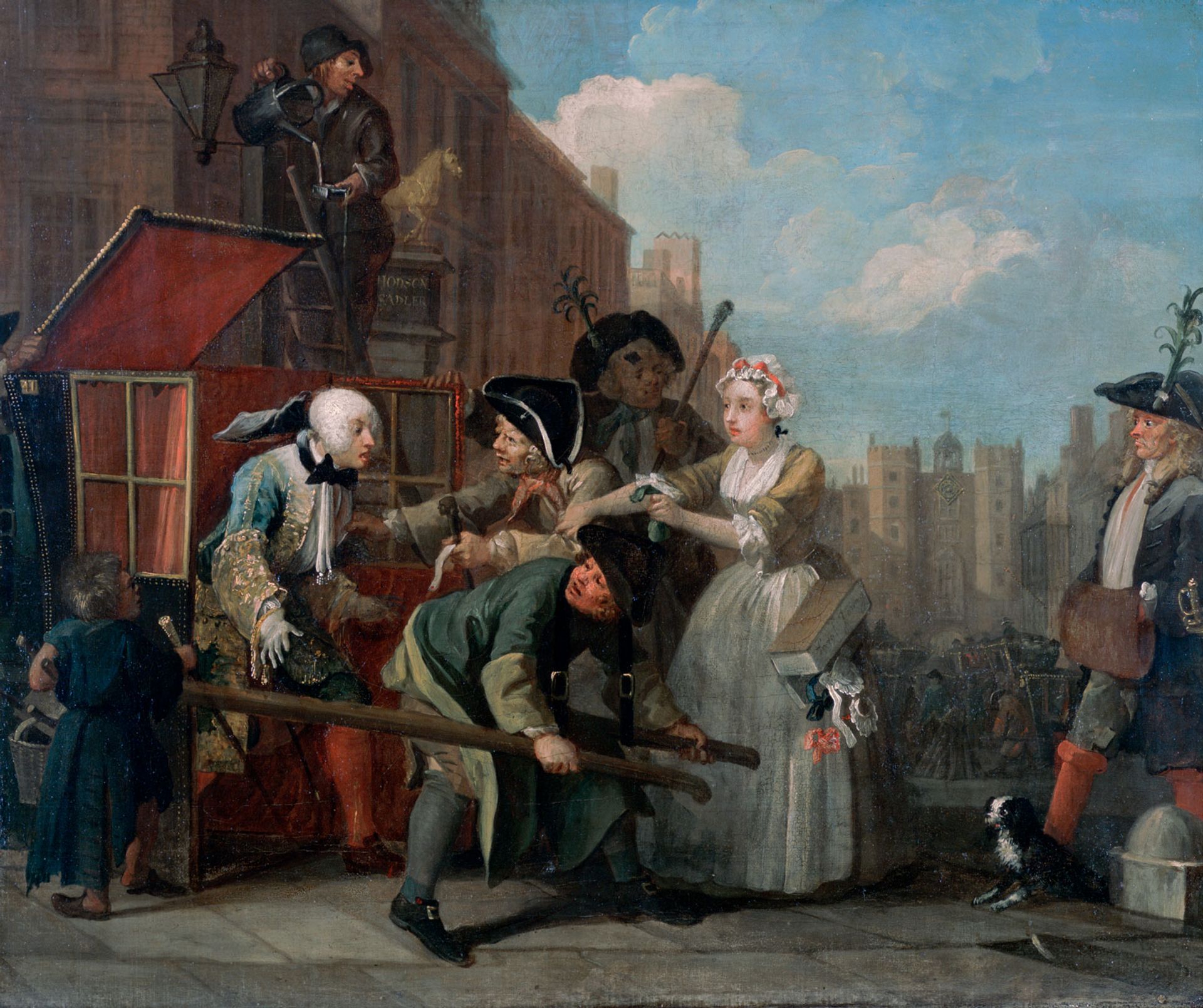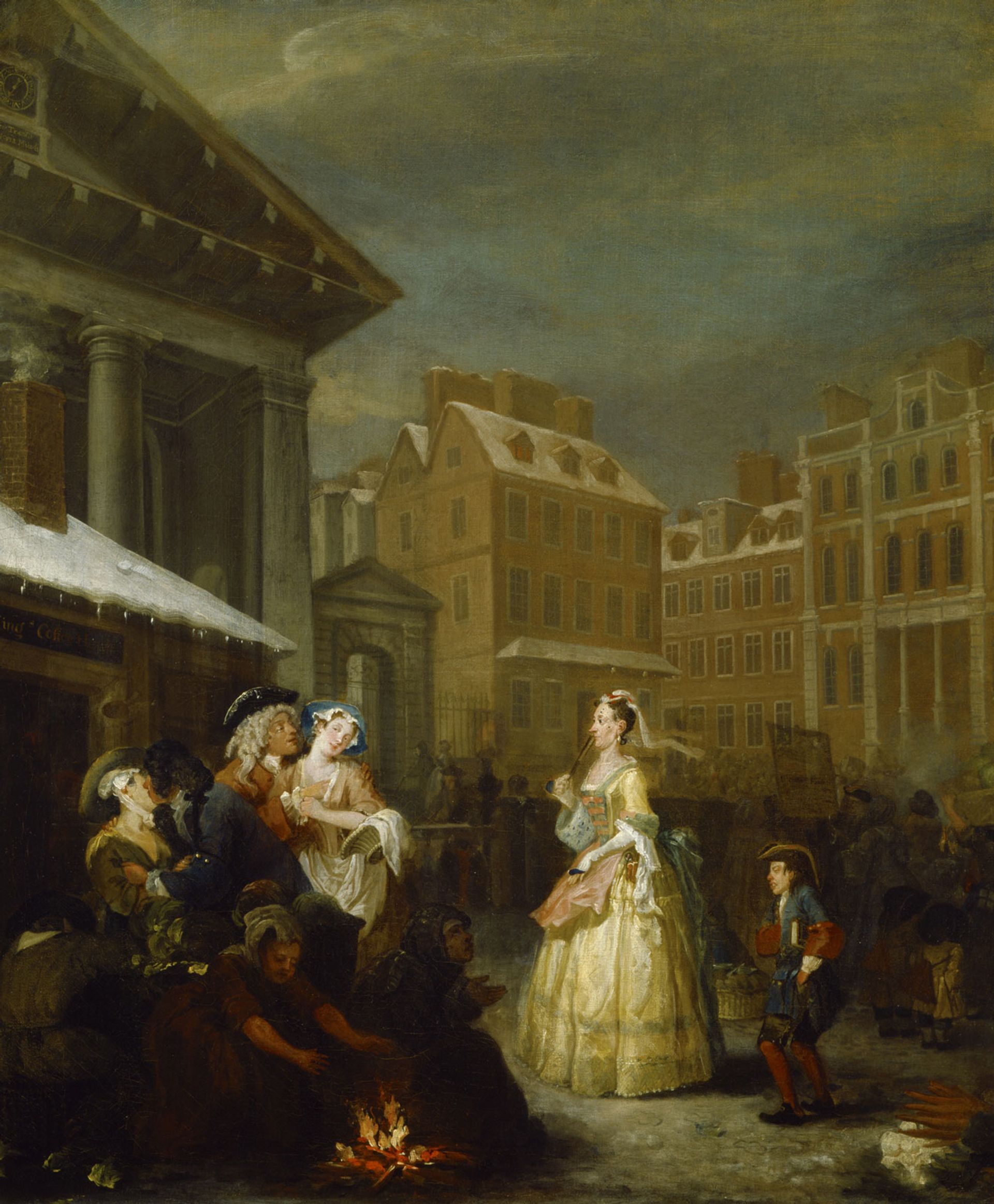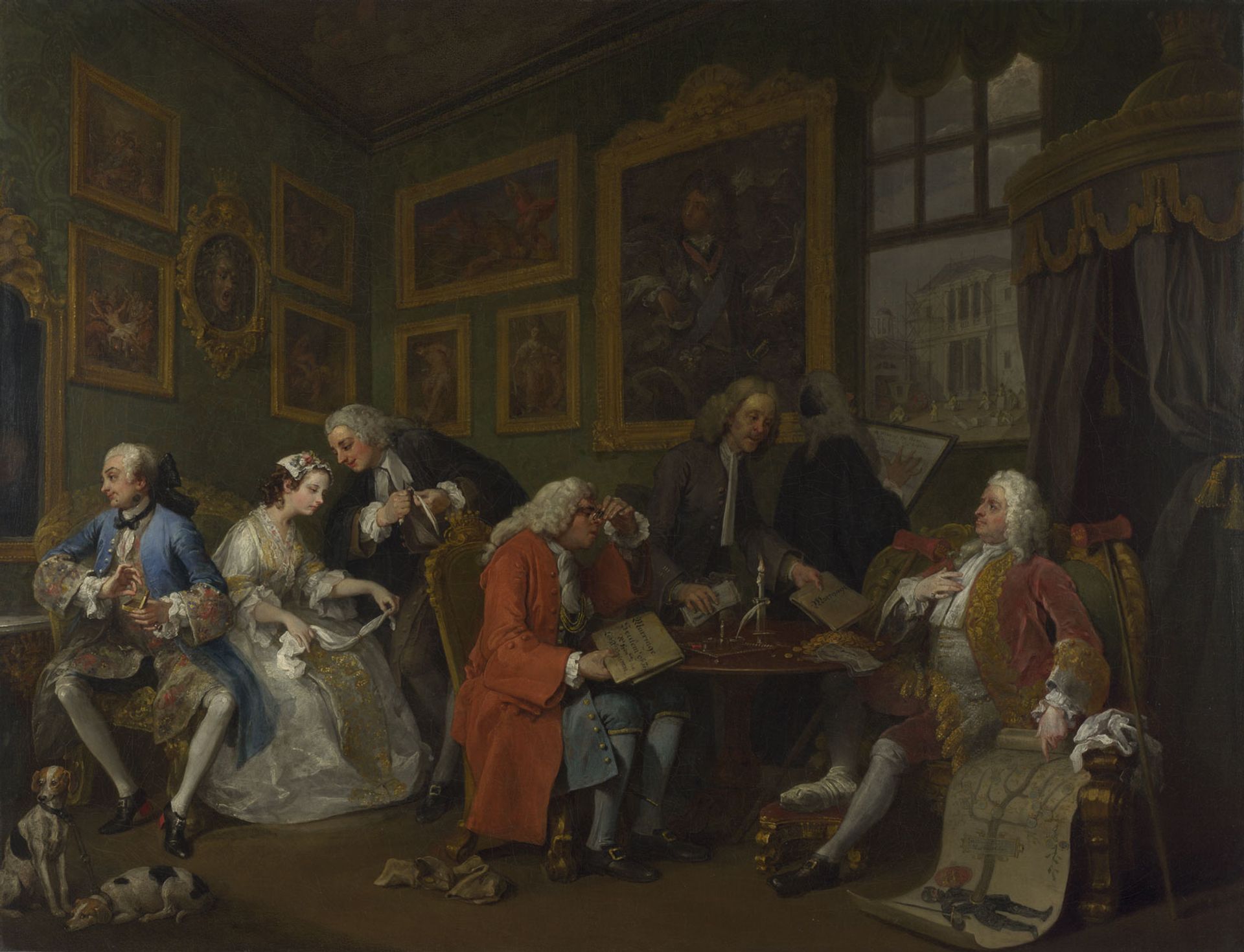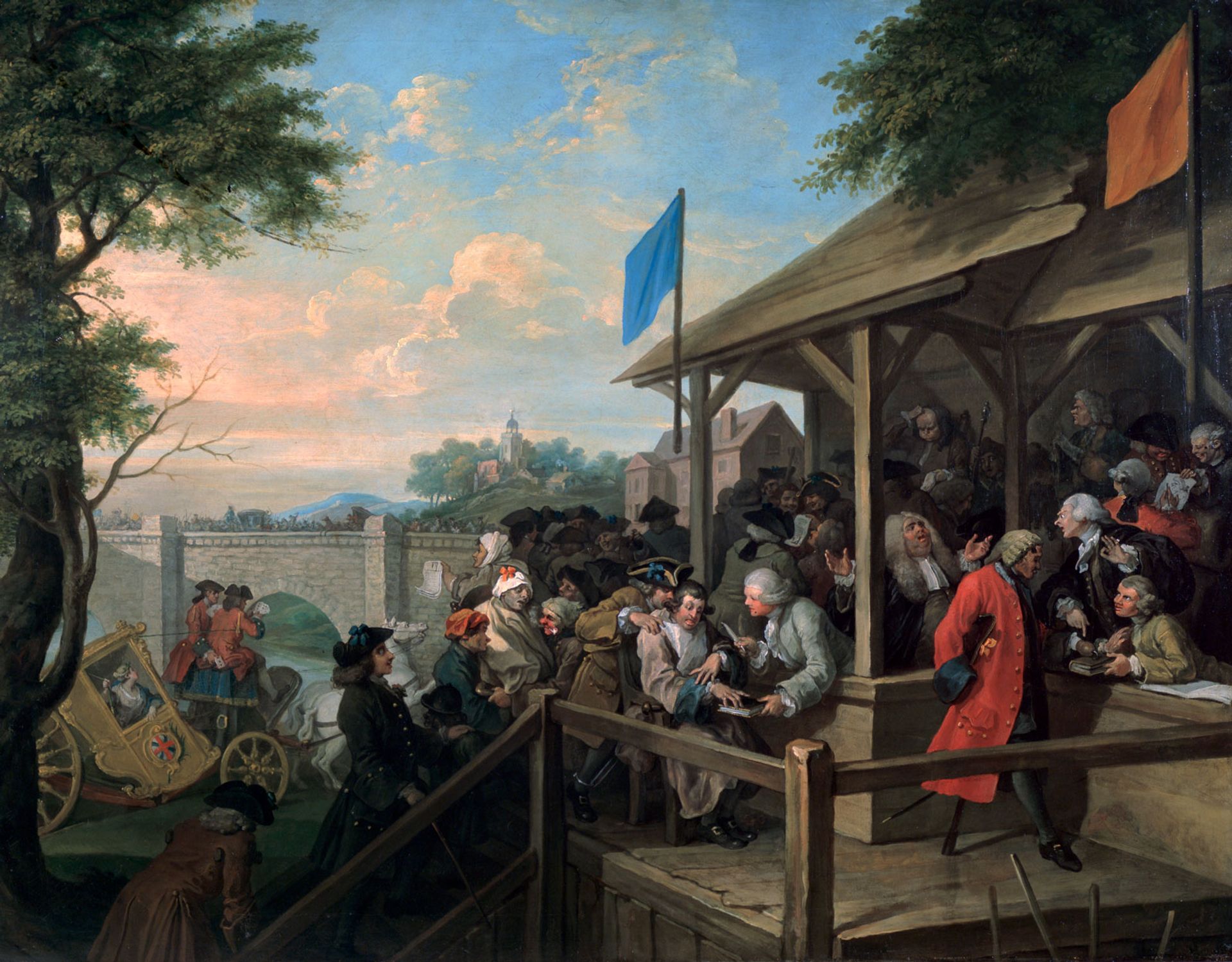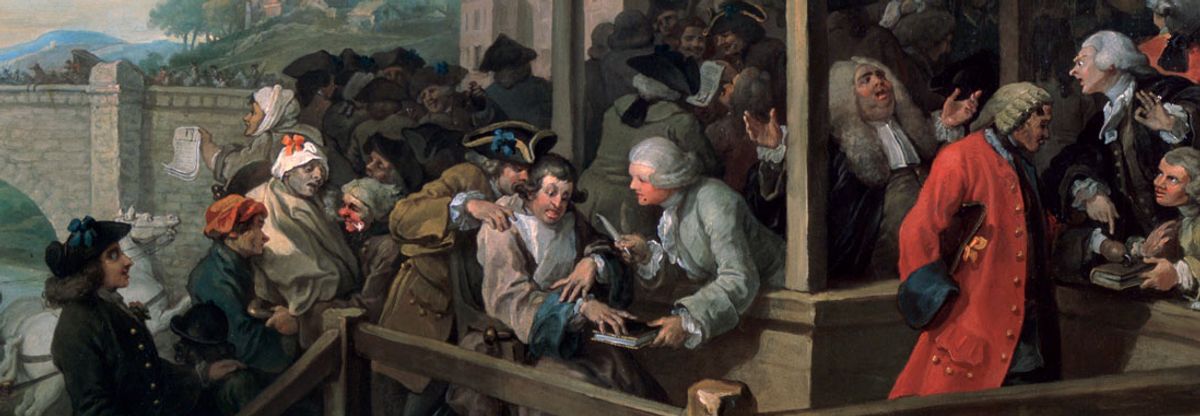Has life really changed that much since the 18th-century depicted by William Hogarth? The artist’s paintings of carousing and canoodling in Covent Garden, peccadillos in Piccadilly and hard polling in the provinces all seem rather contemporary. These scenes, and many more can be seen in a new exhibition opening in London this week that reunites all of Hogarth’s painting series for the first time. The Sir John Soane’s Museum already owns the complete sets of A Rake’s Progress and An Election, which are displayed in its distinctive Picture Room with its moving ‘picture plane’ walls. The museum’s two series will be joined by Marriage A-la-Mode, Four Times of Day and the three existing paintings from the unresolved The Happy Marriage series. Although the series have been shown together before, at Tate’s 2007 and 1971 exhibitions of the artist, this is the first time all the paintings will be exhibited together—previously some of the works were represented by etchings.
The moral narrative series are “are constructed like plays”, says the exhibition’s curator David Bindman, “with each painting representing a dramatic scene, most of which show flawed individuals’ moral progress towards death, expressed in journeys through London, whose streets and monuments signify their moral and social position.” New research ahead of the exhibition has also highlighted the importance of the 18th-century settings of the works. “This moral geography is based on the contrast between the City of London, the commercial hub inhabited by merchants; the courtly and aristocratic West End; and the raffish area in between, filled with brothels and places of entertainment”, Bindman says.
Bindman has picked out five key works from each of the series, telling us the stories behind them and revealing the locations that inspired the scenes.
• Hogarth: Place and Progress, Sir John Soane’s Museum, London, 9 October-5 January 2020


